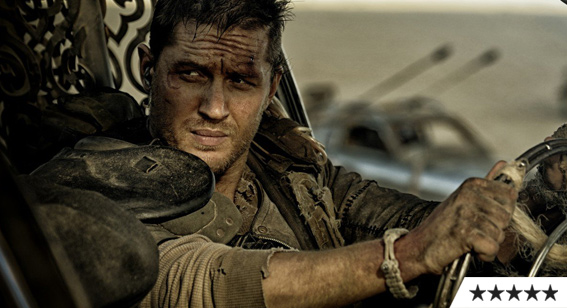Review: Mad Max: Fury Road

The brutal Mad Max universe hasn’t gotten any softer with time, nor has director George Miller, now in his 70s and revisiting the devastated future he last brought to the screen in 1985’s Beyond Thunderdome. Essentially a two-hour chase, Fury Road is a brilliant example of a broad palette of filmmaking techniques applied in service of a gripping thrill-ride that seldom relents.
The big budget is matched by massive creativity, ranging from subtle makeup effects distinguishing one sad future freak from another to a staggering number of crazy and often-enormous future battle vehicles in epic confrontations. A strong emphasis on practical effects is bolstered, not replaced, by CGI work that’s always in keeping with the Mad Max aesthetic, with vehicular carnage that’s truly something to behold, and constantly rich in variety.
Miller’s had plenty of time to continue his world-building, and it shows, with Fury Road rich in details that thankfully don’t require explanation. The same is true of key narrative elements, the film respecting its audience, showing instead of telling, and proving continually intriguing in the process.
The constant chase helps newcomers, who’ll be just as able to follow events as hardcore fans. And in Tom Hardy the film has found its perfect Max, an actor possessed of great presence, requiring little dialogue, happy to have his face obscured and be relegated to the sidelines of first act skirmishes, and able to project a physical resemblance to predecessor Mad Mel where required.
A modern action classic that’s not beholden to contemporary or past stylistic trends, Fury Road is its own unique beast, perhaps beamed in from a parallel universe where the last thirty years of action movies have been this bloody good the whole time. Maybe it’s called Battletruck there too.
‘Mad Max: Fury Road’ Movie Times (also in 3D)
















